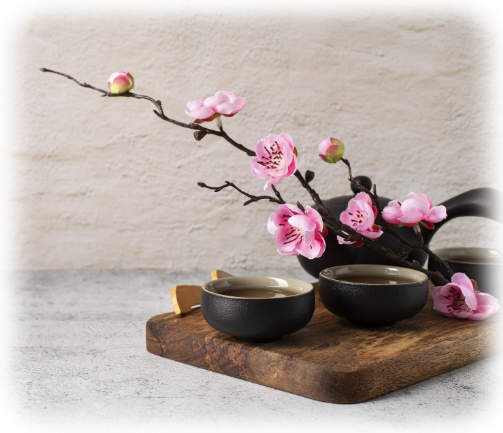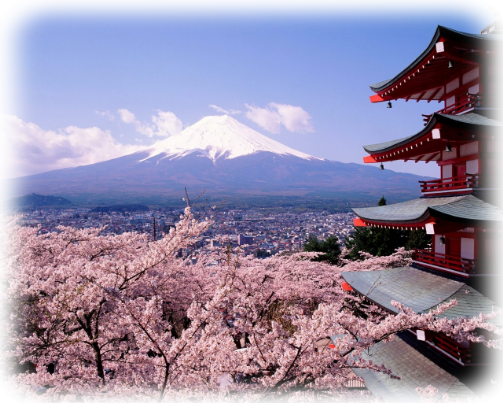



HANAMI
Hanami means "to observe the flowers" (from hana= flowers and mi= to see) and is in fact the traditional Japanese event that consists in celebrating and enjoying the beauty of flowers, especially cherry blossoms (Sakura), observing their bloom in the beautiful days of spring.
Hanami is an outdoor festival under the cherry trees that lasts one or two weeks. From mid-January to early May, Sakura trees bloom all over Japan, and in April this magnificent event begins in full bloom.
Hanami is an event born many centuries ago. It is said that this custom found its origins during the Nara period (710-794), when the Chinese Tang Dynasty influenced Japan in many different ways, bringing many traditions and customs to the Rising Sun. One of these traditions was to enjoy the beauty of flowers in springtime. Although the flowers initially celebrated were plum blossoms (ume), Sakuras soon became the flowers of choice for this occasion because their beauty attracted the most attention. The sakura ended up so, in the Heian period, to become the most celebrated flowers during the Hanami period.
It was Emperor Saga who wanted to adopt this practice by starting to hold parties and dances under the cherry trees planted in the garden of the Imperial Court Palace in Kyoto. At that time, hanami was an event reserved only for people of high lineage, nobles, samurai who frequented the court and poets who wrote verses praising the charm and wonder of such beauty. Then, with the arrival of the Edo period, this event was opened to all the others who could celebrate this custom by drinking sake and eating under a rain of pink petals.
The hanami is a festival dedicated to the celebration of the beauty of nature but not only: the cherry blossom in fact was the period related to the harvest of rice. In ancient times people used cherry trees as a means of predicting the quality of that year's harvest and, believing that the kami resided in those beautiful plants, they would bring offerings of all kinds to the cherry tree and pray to the deities to grant them good luck.
Today the Japanese still continue the tradition of hanami because this period coincides with the beginning of the Japanese school year. People and especially young people like to gather around large flowering trees and hold parties and small banquets or picnics outdoors. They love to walk and take long walks in the parks with the sole purpose of relaxing and devoting themselves to complete meditation and contemplation not only of nature but also of themselves in the name of well-being and renewal of the spirit. The walks are prolonged until late in the evening where, thanks to the complicity of the moonlight and the lighted chochin (paper lanterns), the event becomes a truly suggestive spectacle with an atmosphere that is certainly very beneficial to young couples in love.
But the deepest sense of hanami is linked to fragility, the transience of life and the transience of things. The blossoming of the cherry trees is a beautiful spectacle but destined to end soon, just when it has reached its peak. Exactly like life or beauty which is wonderful but ephemeral.

